In the realm of psychological education, social psychology is the scientific study of how our thoughts, feelings, and behaviors are influenced by the presence of others.
Importance of Social Psychology
- Studying social psychology offers valuable insights into human behavior and helps us understand how individuals perceive and interpret social interactions.
- It provides a framework for understanding why people think, feel, and behave the way they do in social contexts.[1][2]
.
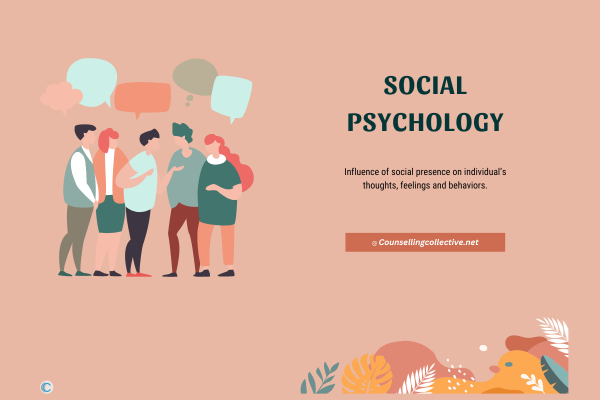
In this article we are going to cover the introduction to significant social psychologists, social perception, social interaction, group dynamics, relationship of society with social psychology and application of social psychology to everyday life.
Contents
Main Psychologists in the Field of Social Psychology
Table no. 1 – Social Psychologists in Chronological Order
| Psychologist | Contributions and Notable Work |
| Kurt Lewin | Pioneered field theory and group dynamics. Known for his research on leadership styles and the concepts of “force-field analysis.” |
| 1890-1947 | |
| Solomon Asch 1907-1996 | Renowned for his studies on conformity, particularly the Asch conformity experiments. |
| Leon Festinger 1919-1989 | Pioneered the theory of cognitive dissonance, exploring the psychological discomfort resulting from conflicting beliefs. |
| Stanley Milgram 1933-1984 | Conducted the Milgram obedience experiments, revealing the willingness of individuals to obey authority figures. |
| Philip Zimbardo 1933-present | Conducted the Stanford prison experiment, investigating the psychological effects of perceived power in a prison setting. |
| Robert Cialdini 1945-present | Known for his work on the principles of influence and persuasion. His book “Influence: The Psychology of Persuasion” explores the factors that drive human compliance with requests. |
| Ellen Langer 1947-present | Pioneered research on mindfulness and the illusion of control. Her work focuses on how changing mindsets can impact behavior. |
| Daniel Kahneman 1934-present | Noted for his research in behavioral economics and prospect theory. His work has reshaped understanding of human decision-making. |
| Carol Dweck | Known for her research on growth mindset and self-theories. Her work highlights the role of beliefs in shaping achievement. |
| 1946-present | |
| Albert Bandura | Pioneered social learning theory and the concept of self-efficacy. His research has had a profound impact on understanding behavior. |
| 1925-present |
Social Perception and Cognition
By understanding how our thoughts, feelings, and behaviors are influenced by others, we can better understand ourselves and the world around us. This knowledge can help us to improve our relationships, make better decisions, and create a more just and equitable society.
Social cognition refers to the mental processes involved in perceiving, remembering, and interpreting information about others. Social influence is the process by which people’s thoughts, feelings, and behaviors are affected by others.
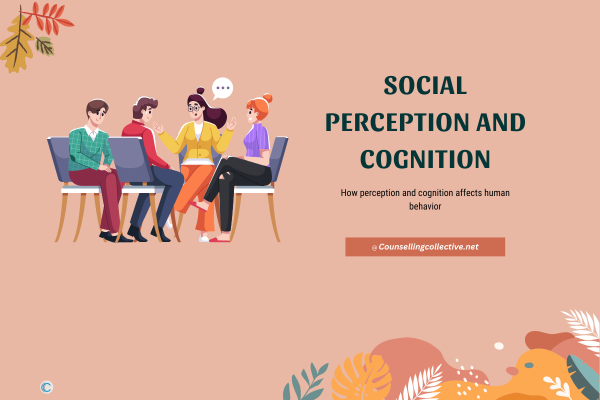
In addition to social perception, cognition & influence, following psychological phenomenon are essential in social psychology.
- Conformance & Compliance
- Obedience to Authority
- Group Influence and Group Dynamics
Social Cognition: How We Think About Others
It encompasses how we form impressions of people, how we attribute causes to behavior, and how we make judgments and decisions based on social information.
- Attribution Theory: Explaining Behavior ; Attribution theory explores how people explain the causes of behavior, both in themselves and others. It examines how individuals attribute behavior to either internal factors (such as personality traits) or external factors (such as situational factors).
- Attitudes and Attitude Formation; Attitudes are evaluative judgments about people, objects, or ideas that guide our thoughts, feelings, and behaviors. Social psychologists study how attitudes are formed, how they can change, and how they influence our interactions with others. Attitude formation processes include direct experience, socialization, and cognitive processes such as cognitive harshness.
- Stereotypes and Prejudice; Stereotypes are generalized beliefs and expectations about certain groups of people, while prejudice refers to negative attitudes and feelings toward individuals based on their membership in a particular group. Social psychologists examine the origins, maintenance, and consequences of stereotypes and prejudice, as well as strategies to reduce them. [3]
Social Influence: The Power of Others
Social influence is the process by which people’s thoughts, feelings, and behaviors are affected by others. There are many different types of social influence, but some of the most common include:
Table 2. Factors of Social Influence
| Factor | Description | Key Studies/Experiments |
| Conformity | Conformity refers to the tendency of individuals to adjust their thoughts, beliefs, and behaviors to align with social norms or the majority opinion in a given social situation. | Asch Conformity Experiment[5] : Solomon Asch’s study (1950s) where participants conformed to the incorrect majority answer in a line-length judgment task when surrounded by confederates[6] . |
| Compliance | Compliance involves changing one’s behavior in response to a direct request or suggestion from others, even if it goes against personal preferences or beliefs. | Foot-in-the-Door Technique: A compliance technique where a small request is followed by a larger one, increasing the likelihood of compliance. |
| Obedience | Obedience to authority refers to the tendency of individuals to comply with commands or orders from an authority figure, even if it involves acting against their moral principles. | Milgram Experiment: Stanley Milgram’s study where participants administered electric shocks to an actor under the influence of an authority figure. |
| Group Influence | Group influence encompasses how the presence or actions of others within a group can affect an individual’s decisions and actions. It also involves studying group dynamics. | Groupthink: A phenomenon where group members prioritize agreement and conformity over critical thinking, potentially leading to poor decision-making. |
The Asch Conformity Experiment
One of the most famous studies on conformity is the Asch Conformity Experiment conducted by Solomon Asch in the 1950s.
- In this experiment, participants were asked to compare the Asch Conformity Experiment conducted by Solomon Asch in the 1950s. the lengths of lines and indicate which line matched the length of a target line.
- The results revealed that many participants conformed to the incorrect majority answer despite knowing it was wrong. This experiment demonstrated the power of social pressure and the desire to fit in with the group.[4]
The Foot-in-the-Door Technique: A Persuasive Power
The Foot-in-the-Door (FITD) technique is a psychological persuasion strategy leveraging the human tendency to uphold consistency in actions and commitments. It commences with a small request, fostering a self-image of helpfulness and cooperation upon compliance. Subsequently, when a larger request follows, individuals are inclined to agree to sustain this self-perception.
The FITD technique is grounded in theories like Self-Perception, Cognitive Dissonance, and the Consistency Principle. It highlights the human inclination to align current behavior with past actions and commitments. However, ethical considerations are essential, ensuring requests are not manipulative or coercive.
Understanding the FITD technique sheds light on the subtle ways in which human behavior is influenced, empowering individuals to recognize and respond to persuasive tactics while maintaining personal boundaries.
The Milgram Experiment
Stanley Milgram’s infamous obedience study in the early 1960s demonstrated the disturbing power of obedience.
Participants in this experiment were instructed to administer electric shocks to a person (who was actually an actor) whenever they answered questions incorrectly. As the voltage increased, the actor expressed pain and reluctance to continue, but an authority figure urged the participants to continue the experiment. A significant number of participants obeyed the authority figure and administered potentially lethal shocks. This study revealed the potential dangers of blind obedience to authority.
Group Influence and Group Dynamics
Groups play a crucial role in shaping individual behavior and attitudes. Group influence refers to how the presence or actions of others can affect an individual’s decisions and actions. Group dynamics involve studying the interactions, cohesion, and processes within groups.[7]
Social Interaction and Relationships
Social interactions are the routine communication interfaces between individuals which affect individual’s behaviors and the relationship between them.
This section covers how different social psychology’s theories define individual’s behavior in interactions and how those interactions become the core of relationships like friendship and love.
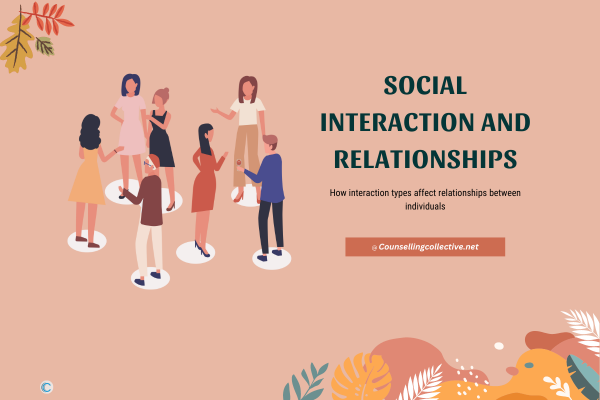
Following theories explain the nature of social influence and human behavior from the lens of social psychology:
- Social Identity Theory: Social identity theory, proposed by Henri Tajfel, explains how individuals derive a sense of identity and self-esteem from their group memberships. This theory highlights the importance of group membership in influencing behavior and intergroup relations.[6]
- Deindividuation: Deindividuation is a state in which individuals lose their sense of individuality and personal responsibility in group settings. This phenomenon can lead to reduced inhibitions and an increased likelihood of engaging in impulsive or deviant behavior.
- Theories of Attraction: Understanding why people are drawn to one another has been a central focus of social psychology. Several theories attempt to explain the factors that contribute to interpersonal attraction:
- The Proximity Effect: The proximity effect suggests that physical proximity plays a crucial role in determining who we form relationships with. The more often we encounter someone, the more likely we are to develop a bond with them. This is because proximity increases the opportunities for interaction and familiarity, making it easier for individuals to get to know each other.
- The Similarity Principle: The similarity principle proposes that individuals are attracted to others who share similar characteristics, beliefs, attitudes, and values. We tend to seek out relationships with people who validate and reinforce our own views, which fosters a sense of connection and understanding.
- The Halo Effect: The halo effect refers to the tendency to perceive physically attractive individuals as possessing other positive qualities, such as intelligence, kindness, and competence. This cognitive bias leads us to assume that attractive people have more desirable personalities, making them more appealing as potential partners or friends. [11] [12]
Interpersonal Attraction and Close Relationships
Interpersonal attraction refers to the positive feelings and attitudes that individuals have towards one another. It involves the desire to be close to someone, whether in a platonic or romantic sense. Close relationships, on the other hand, encompass the deep connections and bonds people form with each other, such as friendships and romantic partnerships.
Friendship and Romantic Relationships
- The Dynamics of Friendships: Friendships are essential bonds that provide emotional support, companionship, and a sense of belonging. The formation of friendships is influenced by these factors: common interests, shared activities and mutual trust. Strong friendships are built on empathy, trust, and open communication, which foster a deep sense of understanding and intimacy.
- Romantic Relationships and Attachment Styles: Romantic relationships are characterized by passion, intimacy, and commitment. These relationships can be influenced by individual differences in attachment styles—secure, anxious, or avoidant. Securely attached individuals tend to have trusting and stable relationships, while those with anxious or avoidant attachment styles may experience difficulties in forming and maintaining intimate connections.
Love and Intimacy
Love is a complex emotion that can be broken down into three primary components:
- Intimacy refers to the emotional closeness and connection between individuals.
- Passion involves the intense feelings and desires associated with physical and emotional attraction.
- Commitment refers to the decision to maintain the relationship over time, despite challenges and obstacles.
Sternberg’s Triangular Theory of Love
Psychologist Robert J. Sternberg proposed the Triangular Theory of Love, which integrates the three components of love—intimacy, passion, and commitment—into different types of love.[14] [13] These include: Romantic love (intimacy and passion), Companionate love (intimacy and commitment), Consummate love (a balance of all three components)
Social exchange and relationships
Social exchange theory is a social psychological theory that explains how people form and maintain relationships. The theory posits that people enter into relationships in order to maximize their rewards and minimize their costs.
Rewards can be anything that a person finds valuable. e.g. love, companionship, support. Cost can be anything that a person finds burdensome, such as time, effort, or money.
Social Exchange Theory
The Social Exchange Theory, proposed by Thibaut and Kelley in 1959, is a fundamental principle in understanding human relationships and interactions.
This theory posits that individuals engage in social exchanges with others based on the expectation of receiving rewards and avoiding punishments. In essence, individuals seek to maximize rewards and minimize costs in their interactions, striving for positive outcomes.
Table 3. Cons and benefits of Social Exchange Theory
| Cons of Social Exchange Theory | Benefits of Social Exchange Theory |
| 1. Simplistic View of Human Behavior (Homans, 1958) Critics argue that social experience theory oversimplifies human behavior by reducing complex emotions and interactions to a mere cost-benefit analysis.[10] | 1. Understanding Relationship Dynamics[11] (Blau, 1964) social experience theory provides valuable insights into interpersonal relationships. It helps understand relationship stability, satisfaction, and reasons behind changes in relationships. [9] |
| 2. Neglecting Altruism and Empathy (Thibaut & Kelley, 1959) Social Experiment Theory may not fully account for acts of altruism and empathy. Altruistic behavior involves helping others without expecting anything in return, which goes beyond cost-benefit analysis. | 2. Predicting Behavior (Emerson, 1976) Social Experiment Theory enables prediction of behavior based on perceived costs and rewards in social interactions. Individuals are more likely to engage in relationships with higher rewards and lower costs. |
Equity Theory and Relationship Satisfaction in Social Psychology
Building upon the Social Exchange Theory, the Equity Theory, proposed by Adams in 1965, emphasizes the importance of fairness and equity in relationships.
- According to this theory, individuals strive to achieve a sense of fairness in their interactions with others. Equity is achieved when the ratio of rewards to costs for one individual is equal to that of their partner.
- When individuals perceive inequity in a relationship, they experience psychological distress and are motivated to restore balance. This can be done through various means, such as adjusting their contributions or seeking greater rewards from the relationship. Inequity can lead to feelings of dissatisfaction, resentment, and strain within the relationship.
- The Equity Theory highlights that maintaining a balance of give-and-take is crucial for relationship satisfaction and longevity.
- It emphasizes the significance of perceived fairness and the role it plays in determining the strength and quality of social bonds. [17]
Table No.4 Equity theory Vs Social exchange.
Below is a comparison table highlighting the key differences between the Equity Theory and the Social Exchange Theory in the context of relationship dynamics:
| Equity Theory | Social Exchange Theory |
| Main Focus : Fairness and Equity in Relationships | Costs and Benefits of Social Interactions |
| Core Proposition People strive for fairness by seeking balance in relationships | Individuals engage in exchanges to maximize rewards and minimize costs |
| Key Elements : Perception of equity in relationship | Rewards |
Social Communication and Nonverbal Behavior
- Intricate interplay between verbal and nonverbal communication
- Delves into effective communication strategies that can enhance our interpersonal relationships and overall communication skills.
Verbal and Nonverbal Communication
Verbal communication encompasses the use of spoken or written words to convey thoughts, feelings, and ideas.
It relies on these; language, grammar, vocabulary, forming the foundation of human interaction in various settings from casual conversations to formal presentations.
This mode of communication is not limited to the words spoken but also includes elements such as tone, pitch, and speed. [18] [19]
Nonverbal communication refers to the transmission of information without the use of words. This form of communication involves facial expressions, gestures, body language, eye contact, posture, and even touch.
Nonverbal cues often reveal emotions, attitudes, and intentions, offering valuable insights into a person’s true feelings beyond what their words may convey. For instance, a smile can express warmth and friendliness, while crossed arms may indicate defensiveness or discomfort.
Effective Communication Strategies
- Active listening: Give full attention to the speaker, focus on both verbal and nonverbal cues, and provide feedback to demonstrate engagement.
- Empathy and emotional intelligence: Understand and share the feelings of others, and regulate and express emotions appropriately.
- Cultural awareness: Be aware of different communication styles, norms, and nonverbal cues across cultures.
- Nonverbal synchrony: Mirror or match the nonverbal behavior of the person you are communicating with.
- Managing nonverbal cues: Be mindful of your own nonverbal cues and avoid sending unintended signals.
- Digital communication and nonverbal behavior: Recognize the nuances of nonverbal behavior in online interactions, such as using emojis and punctuation to convey emotions and attitudes.[20]
Group Dynamics and Social Behavior
This section covers:
- Intricacies of group processes, decision-making
- Group formation, and structure.
- Providing a comprehensive understanding of how individuals interact within groups.
- How group dynamics influence their actions and decisions. [23]

Social Group Formation and Structure
Groups are a fundamental aspect of human social behavior. They can be as small as two people or as large as entire societies.
Group formation occurs through various mechanisms, such as shared interests, common goals, or geographical proximity. When people join groups, they often develop a sense of belonging and identity, which influences their behavior within the group. [21] [22]
Types of Groups
Groups can be categorized into various types based on their characteristics and functions:
- Primary Groups: These are intimate and long-lasting groups typically formed with family members or close friends. They provide emotional support, a sense of belonging, and social identity.
- Secondary Groups: These are larger and more formal groups, often organized around specific tasks or objectives. While they may lack the emotional depth of primary groups, they serve important functions in achieving common goals.
- In-Groups and Out-Groups: In-groups are groups to which individuals feel a sense of loyalty and belonging, whereas out-groups are viewed as distinct or different. The in-group/out-group dynamics can lead to intergroup bias and discrimination.
Group Structure: Groups have a certain structure that influences communication patterns, decision-making processes, and power dynamics. There are three group structure:
- Formal Structure: In formal groups, there are established rules, roles, and hierarchies. These structures are common in organizations and institutions, guiding the interactions and responsibilities of group members.
- Informal Structure: Informal groups emerge based on social interactions and personal affinities. While they may not have explicit roles or rules, they can significantly impact group dynamics.
- Centralized and Decentralized Structure: A centralized structure involves decision-making authority vested in a single individual or a small group of leaders. In contrast, a decentralized structure disperses decision-making power across the group.
Group Cohesion: Group cohesion refers to the degree of unity and camaraderie among group members. Cohesive groups tend to be more stable and cooperative, while low cohesion can lead to conflicts and disintegration. Factors such as shared goals, interdependence, and positive group experiences contribute to group cohesion.
Group Decision Making and Problem Solving
Groups frequently engage in decision-making and problem-solving tasks. While the collective intelligence of a group can lead to innovative solutions, group decision-making is not without challenges. Following two phenomenon (groupthink and group polarization) describe the essence of group decision making.
- Groupthink: Groupthink is a psychological phenomenon that occurs when group members prioritize consensus and conformity over critical thinking. In such situations, dissenting viewpoints may be suppressed to maintain group harmony, leading to flawed decision-making.
- Group Polarization: Group polarization is another phenomenon in group decision-making where the initial inclinations of group members are amplified during discussions. If the majority of group members lean towards a certain viewpoint, group discussions tend to push individuals towards more extreme positions.
Group Decision-Making Models
Several models of group decision-making exist, including:
- Rational Model: This model assumes that group members are rational decision-makers, thoroughly assessing all options and choosing the optimal solution.
- Bounded Rationality Model: In this model, group members make decisions within certain cognitive limitations, such as time constraints or limited information.
- Garbage Can Model: This model describes decision-making as a random process, where problems, solutions, and choices are considered together without a clear sequence.
Leadership and Power in Groups
Leadership and power are fundamental concepts in social psychology that play a significant role in shaping group dynamics and influencing individual behavior. This section covers the intricacies of leadership styles and effectiveness, as well as the dynamics of power and influence in various social contexts. [24]
Leadership Styles and Effectiveness
Effective leadership is crucial for the success and cohesion of any group. Different leadership styles can significantly impact the group’s performance and members’ satisfaction.
Social psychology research has identified various leadership styles, each with its strengths and weaknesses.
- Transformational Leadership: Transformational leaders inspire and motivate their followers to achieve common goals by encouraging creativity, fostering a positive work environment, and promoting personal growth. Studies have shown that transformational leadership is associated with higher job satisfaction and organizational commitment (Bass, 1985).
- Transactional Leadership: Transactional leaders focus on setting clear expectations, providing rewards, and implementing consequences for meeting or failing to meet performance standards.
- Laissez-Faire Leadership: Laissez-faire leaders adopt a hands-off approach, providing little to no guidance or supervision to their subordinates. This style can lead to reduced group cohesion, lack of direction, and decreased productivity.
- Servant Leadership: Servant leaders prioritize the needs of their followers and aim to support and empower them to reach their full potential. Research suggests that servant leadership positively impacts follower satisfaction and well-being (Greenleaf, 1970).
- Authentic Leadership: Authentic leaders are genuine, self-aware, and consistent in their behavior. Authentic leadership has been associated with increased job satisfaction and organizational citizenship behaviors (Walumbwa et al., 2008). [25] [26]
Power and Influence in Social Contexts
Power and influence are critical components of social interactions, affecting individuals’ behaviors and decisions within groups. Understanding the sources and consequences of power can provide insights into how individuals navigate social dynamics.
- Sources of Power: Power can arise from various sources, including:
- Legitimate Power: Derived from a person’s formal position or authority within a group or organization.
- Reward Power: Arises from a person’s ability to provide rewards or positive outcomes to others.
- Coercive Power: Results from a person’s capacity to administer punishments or negative consequences.
- Expert Power: Based on a person’s knowledge, skills, or expertise in a particular domain.
- Referent Power: Stemming from the admiration, respect, or identification that group pressure on individual decision-making others have with a person.
Aggression and Prosocial Behavior
Aggression and prosocial behavior are contrasting aspects of human interaction. Aggression involves harmful or hostile actions towards others and prosocial behavior encompasses acts of kindness, empathy, and helpfulness.
Theories of Aggression
Understanding the underlying mechanisms of aggression is crucial for addressing and mitigating violent behaviors in society. Several theories seek to explain the origins and determinants of aggressive tendencies.
- Social Learning Theory: Propounded by Albert Bandura, the social learning theory suggests that aggression is learned through observation, imitation, and reinforcement. (Bandura, 1973).
- The biological theory: This theory states that aggression is caused by biological factors, such as hormones or genetics.
- Frustration-Aggression Hypothesis: Developed by Dollard et al. (1939), the frustration-aggression hypothesis posits that aggression is a natural response to frustration. When individuals face obstacles in achieving their goals, they may become agitated and resort to aggressive behaviors as an outlet for their pent-up emotions.
- Social Identity Theory: Tajfel and Turner (1979) proposed the social identity theory, which suggests that individuals derive their self-esteem and sense of identity from their group affiliations. In-group favoritism and out-group hostility may lead to intergroup aggression as individuals strive to enhance their social identity and group status.
Altruism and Helping Behavior
Altruism and helping behavior encompass acts of selflessness and concern for others’ welfare, even at personal cost. These positive and prosocial behaviors contribute to the well-being and harmony of social groups.
- Kin Selection Theory: Proposed by W. D. Hamilton, the kin selection theory suggests that altruistic behaviors may be directed towards close relatives because it enhances the likelihood of their shared genes being passed on to future generations. Altruistic acts towards kin are seen as indirectly benefiting one’s genetic legacy (Hamilton, 1964).
- Empathy-Altruism Hypothesis: Batson et al. (1981) proposed the empathy-altruism hypothesis, which posits that empathy plays a crucial role in determining altruistic behaviors.
Applied social psychology is the use of social psychological knowledge to solve real-world problems.
It is a growing field, with applications in a variety of areas, including business, education, health, and the environment.
This section covers applied social psychology in real-world context, health section and with respect to environmental issues.
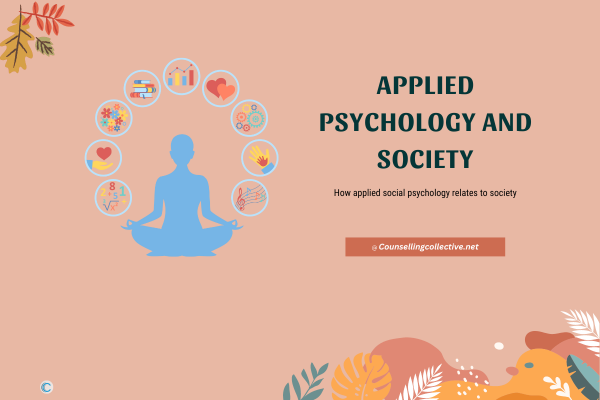
Applied social psychology in Real-World contexts
It aims to bridge the gap between theory and practice, applying social psychological principles to real-world situations to solve practical problems and enhance well-being.
- Social Psychology in Education: Applied social psychology finds practical applications in educational settings. It addresses issues such as academic motivation, learning environments, and the prevention of bullying and aggression among students.
- Social Psychology in Organizations: Understanding social dynamics within organizations is crucial for improving productivity, employee satisfaction, and leadership effectiveness.
- Social Psychology in Legal Systems: Social psychologists contribute to the legal system by providing expertise in areas such as jury decision-making, eyewitness testimony, and the impact of pretrial publicity on trial outcomes.
Applied social psychology and health social psychology
It plays a vital role in understanding the psychological factors that influence health behaviors, medical adherence, and overall well-being.
- Health Belief Model: The health belief model explores how individuals’ beliefs about health risks and the effectiveness of health behaviors influence their decision to adopt preventive measures or seek medical treatment.
- Social Support and Health: Social support from friends, family, and communities plays a significant role in promoting physical and mental health. Social psychology examines the impact of social support on coping with stress, illness recovery, and overall life satisfaction.
- Health Campaigns and Behavior Change: Applying social psychological principles to health campaigns can increase the effectiveness of messages aimed at promoting healthy behaviors, such as smoking cessation, exercise, and nutrition.
Applied social psychology and environmental issues
It contributes to understanding and addressing environmental challenges by examining individual and collective behaviors related to environmental sustainability.
- Environmental Attitudes and Pro-Environmental Behavior: Social psychologists explore the factors influencing individuals’ attitudes toward the environment and their willingness to engage in pro-environmental actions.
- Behavioral Interventions for Environmental Conservation: Applying behavioral interventions, such as feedback on resource consumption, can motivate individuals and communities to adopt more sustainable practices and reduce ecological footprints.
- Social Norms and Environmental Behavior: Social norms significantly impact environmental behavior. Understanding the role of social norms can guide efforts to promote sustainable practices at the community level.
Cross-Cultural Perspectives in Social Psychology
Cross-cultural social psychology is the study of how culture shapes social behavior. It is a growing field, as researchers increasingly recognize the importance of understanding cultural differences in order to effectively apply social psychological knowledge to real-world problems.
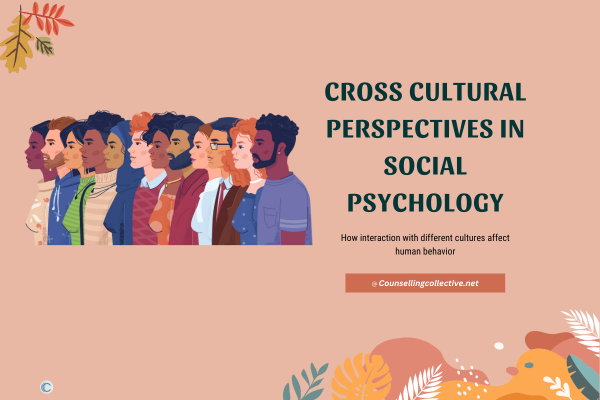
Cultural Influences on Social Behavior Cross-cultural perspectives in social psychology examine how culture shapes human behavior, attitudes, and values.
- Individualism vs. Collectivism: Individualist cultures prioritize personal goals and independence, while collectivist cultures emphasize group harmony and interdependence.
- These cultural differences influence communication styles, decision-making, and self-construal.
- Cultural Dimensions and Social Behavior: Geert Hofstede’s cultural dimensions theory explores variations in values, power distance, and uncertainty avoidance across cultures, shedding light on differences in social behaviors and norms.
- Cultural Attribution: Cultural attribution refers to the process of explaining the behaviors of individuals from different cultures.
- People tend to attribute behavior to internal factors (personality traits) in individualistic cultures, while in collectivistic cultures, behavior is more likely to be attributed to external factors.
- Culture and Aggression: Culture influences the expression and perception of aggression. Some cultures may have more direct and confrontational expressions of aggression, while others may value indirect or passive-aggressive behaviors to resolve conflicts.
- Cultural Norms and Social Identity: Cultural norms shape individuals’ social identity and influence their behavior in group settings Cultural norms play a significant role in determining the salience of group identities and the behaviors that individuals exhibit towards members of their own and other cultural groups.
Cross-Cultural Research Methods Conducting cross-cultural research
This requires careful consideration of cultural nuances and context-specific factors.
- Ethical Considerations: Cross-cultural researchers must respect cultural diversity and obtain informed consent while conducting studies in different cultural contexts.
- Translation and Equivalence: Ensuring the equivalence of research measures across cultures is essential to achieve valid and reliable results.
- Cultural Sampling: Researchers must use appropriate sampling techniques to capture cultural diversity and avoid overgeneralizing findings.
Social psychology is a captivating discipline that unveils the complexities of human behavior and interactions within the social context. This section explores the practical implications of social psychology in everyday life, discusses its future directions, and addresses the challenges that lie ahead.
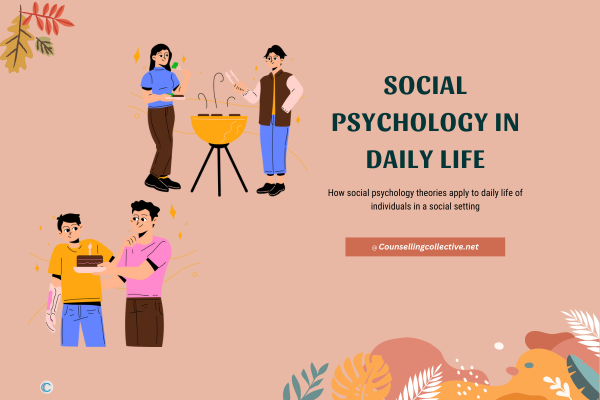
Practical Implications of Social Psychology
Social psychology provides valuable insights into human behavior, attitudes, and group dynamics, which have significant practical implications across various domains:
- Communication and Persuasion: Understanding social influence and persuasion strategies allows individuals to communicate effectively, negotiate, and make informed decisions in everyday life. For instance, being aware of the principles of influence can help consumers navigate marketing tactics and make more rational choices.
- Conflict Resolution and Mediation: Applying social psychological principles to conflict resolution can lead to more constructive and mutually beneficial outcomes. Techniques such as empathic listening and perspective-taking foster understanding and compromise in interpersonal conflicts.
- Leadership and Team Management: Social psychology sheds light on effective leadership styles, team dynamics, and decision-making processes. Utilizing this knowledge can enhance leadership effectiveness and promote positive group interactions in various organizational settings.
- Health and Well-being: Social psychological research on health behaviors, social support, and stress management can be applied to promote physical and mental well-being. Integrating health interventions based on social psychological principles can lead to better health outcomes for individuals and communities.
- Diversity and Inclusion: Social psychology contributes to understanding prejudice, stereotyping, and discrimination. By addressing biases and promoting inclusivity, individuals and organizations can foster a more equitable and diverse environment.
Future Directions and Challenges in Social Psychology
As the field of social psychology continues to evolve, it faces both exciting opportunities and pressing challenges:
- Advancing Technology and Research Methods: Technological advancements open new avenues for data collection and analysis, allowing researchers to explore social phenomena in novel ways. However, ethical considerations and potential biases in online data pose challenges to maintaining research integrity.
- Cultural Relevance and Global Perspectives: Embracing cultural diversity and global perspectives is essential to ensure the applicability of social psychological research across different societies. Efforts to promote cross-cultural collaboration and sensitivity in research are crucial for fostering cultural relevance.
- Addressing Replication and Research Reproducibility: Replication of research findings is critical to establishing robust theories and principles. Social psychology faces challenges in addressing issues related to the replication crisis and promoting transparency in research.
- Emerging Areas of Study: Emerging topics, such as the influence of social media on behavior, the psychology of virtual interactions, and the impact of global crises on social dynamics, present exciting opportunities for research and application.
- Interdisciplinary Collaboration: Collaborating with other disciplines, such as neuroscience, sociology, and economics, can enrich social psychological research and provide a more comprehensive understanding of human behavior.
Conclusion
Social influence shapes thoughts, behaviors, and attitudes. Understanding conformity, compliance, and group dynamics helps us navigate social contexts. Interpersonal attraction insights show factors that form deep connections. Theories of attraction, friendship, and love enrich our understanding of human behavior. Social psychology explains relationships and satisfaction through theories like Social Exchange and Equity. It’s vital for meaningful connections and well-being. Group dynamics reveal how people interact and make decisions in groups. Leadership, power, aggression, and prosocial behavior play roles. Applying social psychology drives positive societal changes in communication, health, and diversity. Embracing complexity and collaboration are crucial for addressing future challenges in human behavior understanding.
References
[1] Aronson, E., Wilson, T. D., & Akert, R. M. (2019). Social psychology (10th ed.). Pearson. Amazon
[2] Baron, R. S., & Branscombe, N. R. (2017). Social psychology (13th ed.). Allyn & Bacon. Amazon
[3] Fiske, S. T., & Taylor, S. E. (2017). Social cognition (3rd ed.). Sage. Amazon
[4] Asch, S. E. (1956). Studies of independence and conformity: A minority of one against a unanimous majority. Psychological Monographs, 70(9), 1-70.
[5] Milgram, S. (1963). Behavioral study of obedience. The Journal of Abnormal and Social Psychology, 67(4), 371-378.
[6] Tajfel, H. (1970). Experiments in intergroup discrimination. Scientific American, 223(5), 96-102.
[7] Turner, J. C., Hogg, M. A., Oakes, P. J., Reicher, S. D., & Wetherell, M. S. (1994). Social identity and social influence. Oxford, UK: Blackwell.
[8] Homans, G. C. (1958). Social behavior as exchange. American Journal of Sociology, 63(6), 597-606.
[9] Blau, P. M. (1964). Exchange and power in social life. Wiley.
[10] Emerson, R. M. (1976). Social exchange theory. Annual Review of Sociology, 2(1), 335-362.
[11] Berscheid, E., & Reis, H. T. (1998). Attraction and close relationships. In D. T. Gilbert, S. T. Fiske, & G. Lindzey (Eds.), The handbook of social psychology (Vol. 2, pp. 193-281). McGraw-Hill.
[12] Aron, A., Aron, E. N., & Smollan, D. (1992). Inclusion of Other in the Self Scale and the structure of interpersonal closeness. Journal of Personality and Social Psychology, 63(4), 596-612.
[13] Hazan, C., & Shaver, P. (1987). Romantic love conceptualized as an attachment process. Journal of Personality and Social Psychology, 52(3), 511-524.
[14] Sternberg, R. J. (1986). A triangular theory of love. Psychological Review, 93(2), 119-135.
[15] Hatfield, E., Walster, G. W., & Berscheid, E. (1978). Equity: Theory and research. Allyn and Bacon.
[16] Argyle, M. (1972). Non-verbal communication in human social interaction. London: Methuen.
[17] Knapp, M. L., & Hall, J. A. (2002). Nonverbal communication in human interaction (5th ed.). Boston: McGraw-Hill. Amazon
[18] Patterson, M. L. (1983). Nonverbal behavior: A functional perspective. New York: Springer-Verlag. Amazon
[19] Janis, I. L. (1982). Groupthink: Psychological studies of policy decisions and fiascoes. Boston: Houghton Mifflin. Amazon
[20] McGrath, J. E. (1984). Groups: Interaction and performance. Englewood Cliffs, NJ: Prentice-Hall.
[21] Bass, B. M. (1985). Leadership and performance beyond expectations. Free Press. Amazon
[22] Bandura, A. (1973). Aggression: A social learning analysis. Prentice-Hall.
[23] Dollard, J., Doob, L. W., Miller, N. E., Mowrer, O. H., & Sears, R. R. (1939). Frustration and aggression. Yale University Press.
[24] Baron, R. A., & Byrne, D. (2004). Social psychology (10th ed.). Boston, MA: Allyn & Bacon.
[25] Hogg, M. A., & Vaughan, G. M. (2010). Social psychology (6th ed.). New York, NY: Pearson. Amazon
[26] Myers, D. G. (2012). Social psychology (10th ed.). New York, NY: McGraw-Hill. Amazon
